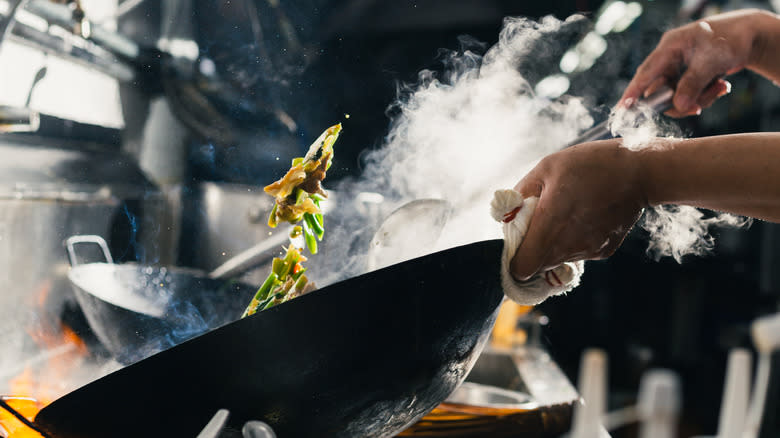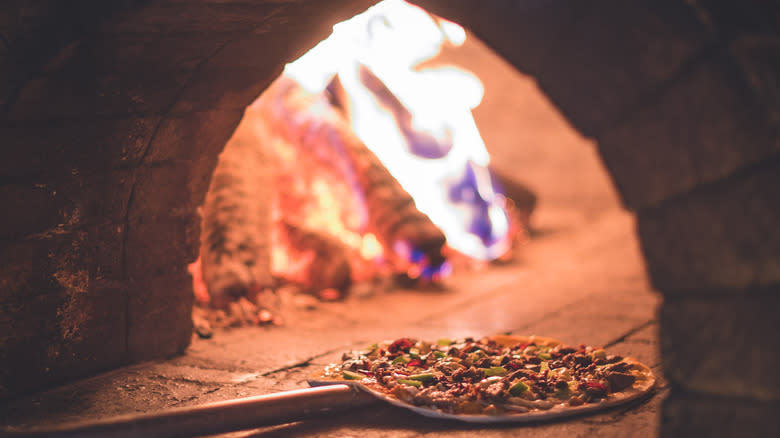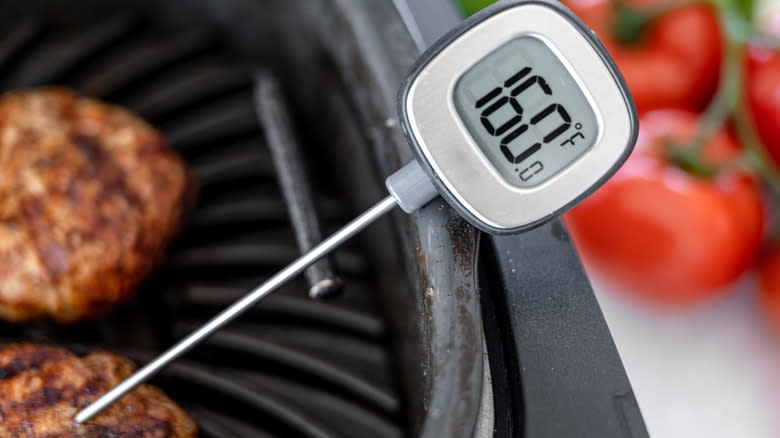Heat And Temperature Seem Synonymous But The Art Of Cooking Proves Otherwise

It may seem like we're getting deep into the weeds of cooking science, and we are a little, but heat and temperature are not the same thing and your culinary life is better for knowing it. In layman's terms, temperature is the amount of energy stored in a particular thing or system, like a filet of fish or a saucepan. Heat, on the other hand, is how energy gets transferred from one place to another.
Let's put this scientific jargon into the kitchen. If you keep your fish filet in the freezer, its temperature is, in the most scientific terms, very cold. Your saucepan has not been frozen. It's sitting on an active burner, and its temperature is hot. If you place your frozen fish filet in your hot saucepan, the heat from the pan will transfer energy from the pan to your fish, but the fish's temperature doesn't immediately change. That's why cooking takes time, because heat takes time to transfer energy.
This matters for a number of reasons, not least of which is the fact that the temperature of something does not equal a high degree of heat transfer. If heat is concentrated, as in an electric kettle, you can raise the temperature of your target (in this case, water) more efficiently. If heat is not concentrated, as in a piping hot grill whose cover is open, it's going to waste a lot of energy trying to heat up your target.
Read more: What Happens If You Accidentally Eat Mold?
The Science Of Heat

Let's start with heat. There are three types of heat transfer: conduction, convection, and radiation. Conduction is the transfer of heat through solids, convection is the transfer of heat through gas or liquid, and radiation is through space.
Back in the kitchen, cooking a stir-fry in a pan is conduction because the ingredients are touching the pan. Convection ovens are called that because they use fans to disperse the air inside the oven, heating the food through the hot air. Your microwave uses radiation to heat food, but so does cooking hot dogs over a fire. Each method of heat transfer gives a different result because the method matters. If you boil steak, you get a different result from seared steak.
Microwave a pizza and you'll get a soggy base, as steam can't escape because the microwave air isn't hot. But put a thin crust into a searingly hot pizza oven, and you'll quickly get a crispy bottom via convection (the oven's hot stone) and a melted cheese top via convection and radiation (the hot air in the oven and the direct heat from the fire).
So, heat is when something hot transfers energy to something cold. That being said, if you place frozen fish onto a hot pan, the pan will drop in temperature faster than if it was room temperature. Your pan may have started at the ideal temperature, but, if you don't understand how heat works, you can throw everything off.
Temperature And Why It Matters

So, let's turn to temperature. Using the knowledge of heat to control temperature is what sets professional chefs apart from amateur cooks. Before we go full master chef, let's cover the basics: One reason we cook food is to make it safe for consumption.
If you're cooking with meat, you need to know what temperature it should reach to be safe. This is where the difference between heat and temperature matters a lot. You can place your burger patty on a grill that is 500 degrees Fahrenheit, but if you don't let your burger reach 160 degrees, it's not so good. In all likelihood, the outside will burn before the inside can even start to cook. The thicker the meat, the longer it takes for heat to transfer to the middle. The old low and slow method of cooking is the unwittingly super-scientific response to the differences between heat and temperature.
If you really want to impress your dinner guests, learn how to use the Leidenfrost effect. At a certain temperature, your pan becomes so hot that water will begin to float on top of the steam it's pushing out. This works for food as well, particularly when using stainless steel pans: Throw a splash of water in to see if it's the right temperature before starting to cook your steak. So, understanding how to use the Leidenfrost effect well is another aspect of understanding heat and temperature. Who knew science could be so tasty?
Read the original article on Tasting Table.

